Mount Jiuhua Scenic Area
Jiuhua Mountain Scenic Spot is located in Anhui Province, China. The northwest is across the Yangtze River and Tianzhu Mountain, and the Southeast Vietnam Taiping Lake and Huangshan are in the same glory. It is the main scenic spot of Anhui Province's "two mountains and one lake" (Jiuhua Mountain, Taiping Lake, Huangshan) tourism development strategy, which consists of 11 scenic spots.
Jiuhua Mountain Scenic Area is the first batch of national key scenic spots, national 5A-level tourist areas, national demonstration sites of civilized scenic spots, and the first batch of national natural and cultural heritage sites. Its peak, Jiuhua Mountain, together with Wutai Mountain in Shanxi, Putuo Mountain in Zhejiang and Emei Mountain in Sichuan, is known as the four famous mountains of Buddhism in China.
From September 28, 2018, the peak season ticket price of Jiuhua Mountain Scenic Area dropped from 190 yuan to 160 yuan.
Jiuhua Mountain Scenic Spot is located in Qingyang County, Anhui Province, China. It is 20 kilometers away from Qingyang County, about 60 kilometers away from Guichi District on the South Bank of the Yangtze River, Huangshan Mountain in the south, Yangtze River in the north, Taiping Lake in the east, 120 kilometers around, 174 square kilometers under protection. The geographic coordinates of the central location (Jiuhua Street) are 117 degrees east and 8 minutes north latitude. Thirty degrees and five minutes.
topographic features
Jiuhua Mountain
Located in the central part of the fault block uplift in southern Anhui Province, the main body is composed of granite, which is influenced by structure and lithology, forming a unique landscapes with peaks as the main part and basin canyons and streams and springs interwoven. Because the uplift range decreases gradually from the core to the surrounding area, and the surrounding mountainous areas are composed of granodiorite and sedimentary rocks with less hardness than granite, which are easy to be eroded. Therefore, the whole Jiuhua Mountain body is composed of numerous mountains, low mountains, hills and inter-mountain basins with various shapes and different heights. Folds and faults are well developed in Jiuhua Mountains, and magmatic activities are frequent.
Climatic characteristics
Jiuhua Mountain belongs to the north subtropical warm monsoon climate type. Its characteristics are: obvious monsoon, distinct seasons, mild climate, abundant sunshine, abundant rainfall, concentrated summer rain, and prominent plum rain. The climate of Jiuhua Mountains has not only the general characteristics of the humid monsoon climate in the north subtropical zone, but also the shady, cool and wet climate in the mountainous areas affected by the altitude and topography of the mountainous areas.
plant resources
Jiuhua Mountain vegetation belongs to the hilly vegetation area of southern Anhui Province in the middle subtropical evergreen broad-leaved forest belt. Jiuhua Mountain vegetation is a gathering place of plants in southeastern China. According to the survey, there are 1463 species of higher plants (embryonic) in Jiuhua Mountain, including 126 bryophytes, 103 ferns, 19 gymnosperms and 1215 angiosperms (including subspecies, varieties and forms), belonging to 176 families and 633 genera. Secondary protection plants include Monascus mongolica, Ginkgo biloba, carnation tree, Toona tomentosa, Liriodendron chinensis and so on.
Water resources
Groundwater in Jiuhua Mountains belongs to the type of bedrock fissure water. The main recharge is atmospheric precipitation. Most of the groundwater in Jiuhua Mountains is in the form of spring water. Especially around the Intermountain basin, because of the development of joint fissures, hot springs are often exposed in the form of group zones. The water temperature is generally around 20 C, and the water quality is delicious. It can be used as a beverage. The shallow pore water mainly distributes in the valley plain of Qingtong River, Jiuhua River and Horn River. Water can be seen at the ground depth of 6-7 meters, which is abundant.
Animal resources
There are 253 species of animals in Jiuhua Mountain, including 13 amphibians, 24 reptiles, 168 birds and 48 mammals, belonging to 28 orders and 69 families. There are Sika deer, black muntjac, White-necked pheasant, clouded leopard, leopard and so on, which are listed as the first class protected animals in the country. There are 8 kinds of second class protected animals in the country, including rhesus monkey, short tailed monkey, pangolin, small civet, Sumen antelope and giant salamander. There are 6 kinds of three kinds of protected animals in the country.
Real Hall
True body pavilion, commonly known as the "body hall", also known as the "body pagoda", is located on the Shenguangling Ridge of Jiuhua Mountain (the top of the Lord). It is the main venue for Buddhist pilgrimage to Jiuhua Holy Land. It is different from the general Buddhist Temple because the main place is for Buddha to hide Bodhisattvas. Jiuhua Mountain Body Palace is a typical palace building with a height of 15 meters and a door facing southwest. When you enter the hall, you have to climb 81 steps. Standing under the steps, you can see two plaques on the south entrance hall: the first mountain in the southeast and the first palace in the flesh. Around the hall, there are carved beams and painted pillars above the corridor, rare birds and animals such as cranes, elk, peony and Ganoderma lucidum.
Ten Wang Feng
Shiwang Peak is located on the south side of Tiantai Peak in Jiuhua Mountain. There is a ridge connecting the two peaks. The elevation of Shiwang Peak is 1342 meters, which is the first peak of Jiuhua Mountain. The mountains and waters of Shiwangfeng are magnificent and delicate, the peaks are confronted with each other, the peaks in the mountains are stacked, the rocks are rugged, the springs and waterfalls are flowing, and the streams are murmuring. On both sides of the peak, dangerous cliffs overlap. In the southwest, there is Boyu Peak, which is 1143 meters above sea level, very similar to the monk's bowl. In the northwest, there is "Luohan Peak" with an elevation of 1280 meters; and "Banquet Sendai" is located in the west of Shiwang Peak.
Hall of great mercy
The Great Sadness Palace is a new palace built after the Shanmen Gate was rebuilt in 1988 in Pandanlin. This hall is built by Huishen monk, who is presided over by Zhantalin. The whole project is designed to imitate classical elegance and magnificence. The main building is six feet and three feet high. The center of the hall is a thousand-handed and thousand-eyed Guanyin Bodhisattva. The whole project covers an area of more than 3000 square meters and is a Taoist venue dedicated to Guan Shiyin Bodhisattva. Jiuhua Mountain Buddhist Association is located in this temple, which is one of the places for large-scale Buddhist activities.
Sweet Dew Temple
Ganlu Temple is one of Jiuhua Mountain temples, which is located under the centering stone on the hillside of Huacheng. Originally known as the Ganlu Temple, also known as the Ganlu Zen Forest, the main buildings of the outdoor Temple of the Ganlu Temple are Shanmen, Daxiong Palace, Wei Qian Hall, Zushi Hall, Jade Buddha Tower, Zen Hall, Pharmacy Hall, Habitat Hall and Abbot Lao. The temple also has Jiuhua Mountain Buddhist College. The main entrance of the temple is unique. The back wall is visible immediately after entering the temple. It is not connected with the courtyard. To reach the main hall, it is necessary to enter through the small gates of the gables on both sides. The whole temple is laid out according to the mountain, with five floors, complete temples and neat pavilions. The temple is surrounded by a heart-setting stone, which is where the monk Yulin rested. In 1983, the Ganlu Temple was designated as a key monastery in the Han nationality region.
Centenary Palace
The Centenary Palace was built in the Ming Dynasty. The centenary palace was first named "Pick Star Ancient", also known as "Wannian Zen Temple". With Zouyuan Temple, Dongya Temple and Manlu Temple, it is the "four jungles" of Jiuhua Mountain. Centenary Palace is also the second body palace in Jiuhua Mountain. The building of Centenary Palace is built according to the mountain situation, connecting up and down, connecting left and right, forming a whole. The main buildings are the mountain gate, the Daxiong Palace, the Zhaitang and the Lao Fang. There are flawless statues in the hall. In 1983, the temple was designated as the national key temple in the Han nationality area.
During Li Yan's reign in Huichang (841-846), Wuzong of Tang Dynasty promoted Taoism and excluded Buddhism, at which time Jiuhua Buddhism was in a declining stage;
During the Song Dynasty, Jiuhua Buddhism developed slightly. In addition to successively restoring Buddhist temples and monasteries built in the Tang Dynasty, six new Jingju temples and Shengquan temples were built, which increased the number of temples in Jiuhua Mountain to 25;
During the short 90 years of the Yuan Dynasty, there was little development of Buddhism in Jiuhua Mountain because Chiwowen Bilie, the ancestor of the Yuan Dynasty, believed in Lamaism in Buddhism and worshipped Tibetan Fabas as an emperor;
In the 24th year of Hongwu Ming Dynasty (1391), the court gave gold to build the Huacheng Temple. In the 2nd year of Xuande (1427), the 11th year of Wanli (1583), and the 31st year (1603), gold was given repeatedly to repair the main temple and the body temple. The temples built in the Ming Dynasty include Tiantai Temple, Zhaoyin Temple, Deyun Temple, Zhenru Temple, Huayun Temple, Changsheng Temple, Longyan Temple, Picking Star Temple (the Centenary Palace) and more than 30 others;
Emperor Kangxi and Emperor Qianlong of the Qing Dynasty visited the south of the Yangtze River many times, and paid heavy money to renovate the Huacheng Temple and admired the plaque of "Imperial Pen". Since then, Jiuhua Buddhism has further developed. There are many temples and Buddhist monks.
In the eighth year of Xianfeng (1858), the Taiping Army and the Qing Army fought fiercely in Jiuhua, and many Buddhist temples and monasteries were destroyed in the fighting. After the war, the Qing government supported the restoration of Buddhist temples for political needs;
During the Guangxu period, Ganlu Temple, Centenary Palace and other temples were bestowed three times with "Dragon Tibet" ("Tibetan Sutra") one each;
After the Revolution of 1911, there were ups and downs among the monasteries, which still maintained the situation of famous Buddhist mountains. On the eve of the Anti-Japanese Day, there were 170 original Buddhist temples (outside the small temples), with 117 in addition to 53 abandoned ones;
During the outbreak of the War of Resistance Against Japan, many ancient temples were set on fire, and Buddhist temples and temples in Fahua Temple, Jiulian Temple, Buddha Li and Dongya Zen Temple were reduced to ashes, resulting in heavy losses in each temple;
After liberation, religious beliefs of religious believers were respected, monasteries and historic sites were protected, historical relics collected in Buddhist temples were properly preserved, and religious activities were carried out normally;
During the ten years of the Cultural Revolution, which began in 1966, Buddhism in Jiuhua Mountain was also greatly impacted, temples, statues and historical relics were damaged, and religious activities were forced to stop;
In the 21st century, Jiuhua Mountain was opened to the outside world, and tourists from home and abroad visited the scenic spots in Jiuhua and Buddhist believers worshipped in the mountains were in an endless stream. Scenic sites and historic sites have been restored and protected. There are 78 ancient temple buildings, big and small. The main temples have been renovated. There are more than 1,500 statues of various sculptures worshiped by Buddhist temples in the whole mountain.
On August 17, 1988, the State Council approved the establishment of Chizhou District. Jiuhua Mountain is under the jurisdiction of Chizhou District by Wuhu City;
On September 9, 1988, the rebuilding project of the Ten Royal Palaces (Rotary Wheel Palace) was started and completed in two years. Zhao Puchu, Vice-Chairman of the CPPCC National Committee and President of the Chinese Buddhist Association, attended the completion ceremony and delivered a speech;
From September 22 to 26, 1988, Liu Haisu, a painter and master of art, visited Jiuhua Mountain to make two oil paintings of "The Palace of the Body" and "Phoenix Pine", and to inscribe the newly compiled Jiuhua Mountain Chronicle and several famous temples;
On May 1, 1989, Jiumin Highway (Jiuhua Street - Zhongminyuan) passed the acceptance test, with a total length of 6952.4 meters. The project lasted five years and invested 1.6 million yuan;
On June 2, 1989, the Commercial Material Bureau of Jiuhua Mountain Administration was established, and the television terrestrial satellite receiving station was built and used;
In 1989, the 4000-metre tourist pedal from Huatai to Tiger Cave was completed, and the Second Ring Road of Benshan Tourism (Jiuhua Street-Minyuan-Tiantai-Huatai-Centenary Palace-Jiuhua Street) was formed;
On September 19, 1990, Zhao Puchu, Vice Chairman of the CPPCC National Committee and President of the Buddhist Association of China, founded and held the first opening ceremony of Buddhist monks in Jiuhua Mountain Buddhist College, attended and delivered a speech;
On September 1, 1991, the reconstruction project of Taibai Bookstore was completed, which lasted nearly four years;
On July 7, 1992, the high-level water diversion project from Longxi to Jiuhua Street broke ground and started construction, which lasted two years and provided 2000 tons of water daily;
On December 17, 1992, 500 Digital Programmable telephones were opened in Benshan. In the same year, the command center of forest fire prevention in Jiuhua Mountain Scenic Area was built;
On June 16, 1993, the Supervisory Bureau of Jiuhua Mountain Management Office was established, and on September 15, the maintenance project of the Bodily Palace was completed;
On March 30, 1994, Shuangxi Temple to Jiuziyan Pedal Road was completed, and the opening ceremony was held on that day; on June 9, 500 Luohan Hall of Centenary Palace was held; on June 17, Jiuhua Mountain Menfang, Wuxi, at the junction of 219 Provincial Highway and 318 National Highway, held the founding ceremony; from June to July, Jiuhua Mountain Cable Television Network was completed and used;
On August 28, 1994, the road surface reconstruction project of 219 provincial highway from Ersheng to Minyuan with a total investment of 2 million yuan was completed, and the grade of highway was raised from grade 4 sandstone road to grade 3 asphalt road; on December 28, the Foreign Culture and Art Center of Benshan was established;
In 1995, Jiuhua Mountain received 10,000 inbound tourists for the first time, reaching 10,019; GDP exceeded 100 million yuan for the first time, reaching 109.4 billion yuan; Jiuhua Mountain Public Security Bureau was awarded the title of "National Excellent Public Security Bureau" by the Ministry of Public Security;
On July 9, 1996, the construction of Jiuhuashan-Huangshan Highway (Jiuhuashan-Huangshan) in Jiunan Section (Jiuhuashan-Nanyang Bay) began.
Bronze cast Unicorn
Copper-cast Unicorn "listen attentively" is one of the precious cultural relics of Jiuhua Mountain. Legend has it that Jin Qiaojue came to Jiuhua Mountain from the State of Xinluo when he crossed the sea on this unicorn. The bronze ware weighs 250 kilograms and was given by the Ming Emperor in the seventeenth century.
The gold and jade seals of Tibetan Bodhisattvas in Jiuhua Mountains were given by emperors of past dynasties, each of which was inscribed with the six characters of "Tibetan benefit and generating gold seals".
In 1705, Emperor Kangxi of the Qing Dynasty gave Jiuhua Mountain the imperial book "Jiuhua Holy Land". The emperor attached great importance to Buddhism in the south of the Yangtze River.
In 1766, Emperor Qianlong, Kangxi's grandson, gave the imperial book of Mount Jiuhua "Fentuopu Religion".
Ming Sutra
In 1586, the Ming Dynasty Tibetan Sutra was issued as a five-year orthodox edition of the Ming Dynasty, totaling 6771 volumes. It was mounted with brocades of different patterns and colors. It was bestowed by Empress Dowager, the mother of Emperor Ming Shenzong, who preached civilization. His oracles were destroyed by fire in Jiaqing, Qing Dynasty, and in the 27th year of Wanli (1599 A.D.), Shenzong awarded the edition of "Wanli Wuxu Year, July Pursued Printing" with the same specifications as the orthodox edition. The oracles (decrees) are well preserved. Sutras are now in the Sutra Building of Huacheng Temple in Tibet. shop
The ancient Indian Buddhists used the leaves of Bedoro to make bamboo leaves, which were as thick as copper coins. They used knives to engrave scriptures on the leaves. It has a history of more than a thousand years.
Blood channel
Haiyu, an eminent monk of the Ming Dynasty, wordless and painstakingly practiced at the Centenary Palace. It took 28 years to study the book "Dafang Guangfo Hua Yan Jing" written by Yinzhu Yongbi with tongue blood, which is known as "Blood Jing" and "Blood Jing of the Ming Dynasty". In the third year of Chongzhen (1630 A.D.), Ming Sizong Zhu was pilgrimaged by the procurator and sealed the body of the flawless monk as a "bodhisattva for the body" and worshipped with gold. The Book of Blood was then treasured by monks and monks. On February 1, 1988, it was identified as a first-class collection by experts of the State Administration of Cultural Relics.
Jiuhua Mountain Scenic Area has carried out a comprehensive renovation of key cultural relics protection units, provincial cultural relics protection units, cultural and Museum units and other cultural relics and buildings in the whole mountain area, and invested considerable human and material resources to protect precious historical relics and Buddhist cultural heritage. Huacheng Temple is now Jiuhua Mountain Cultural Relics Exhibition Museum. Through the unremitting efforts of various departments, many unique treasures have been preserved and displayed, so that the general public has the opportunity to enjoy the collection full of historical charm. Jiuhua Mountain Cultural Relics Museum now collects and exhibits more than 1,000 pieces of scriptures, Buddhist implements, imperial edicts, jade seals and paintings. Many of them belong to rare treasures. There are 99 existing temples in Jiuhua Mountain, more than 10,000 Buddhist statues in past dynasties and more than 2,000 cultural relics handed down from generation to generation.
Matters needing attention
1. When climbing mountains, you need to wear comfortable climbing shoes or sports shoes. You can wear a pair of thick socks to prevent blisters.
2. When climbing mountains, you can prepare walking sticks, which is good for walking.
3. There is a big temperature difference between the mountain and the downhill, so a windbreaker or sweater should be taken to prevent cold. Rainfall is indispensable in the cloudy and sunny mountain areas. It is better to prepare raincoats to facilitate mountain climbing.
4. The natural environment of Jiuhua Mountain is well protected, so snakes and insects are unavoidable. Take some snake medicine just in case.
5. There are wild monkeys on Jiuhua Mountain (such as near the Centenary Palace). Don't play with monkeys at will to avoid being scratched.
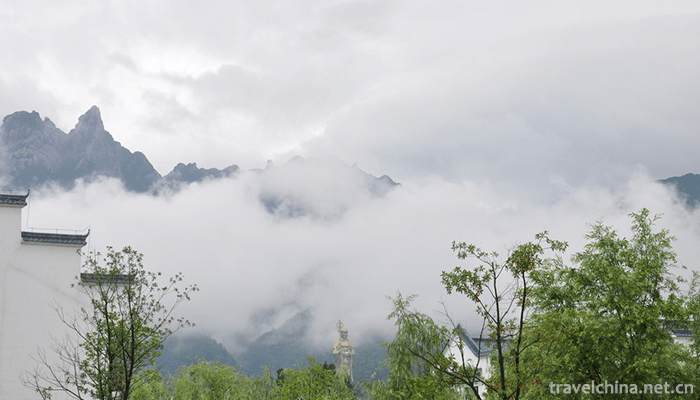
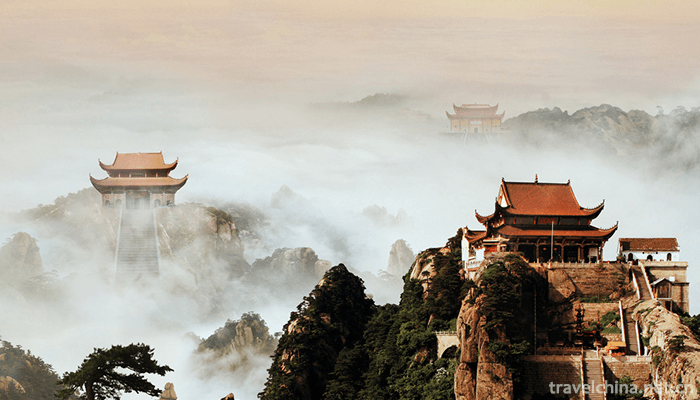
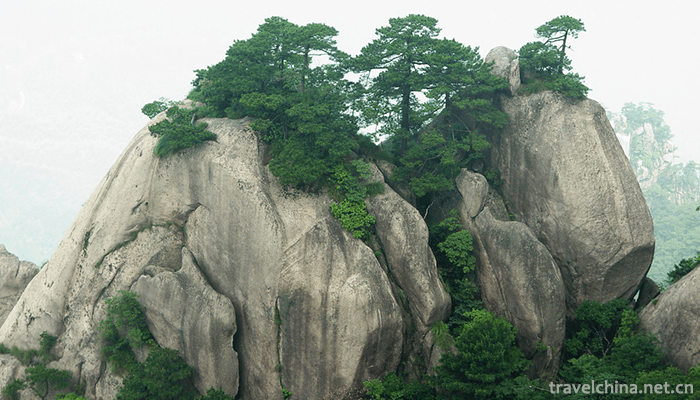
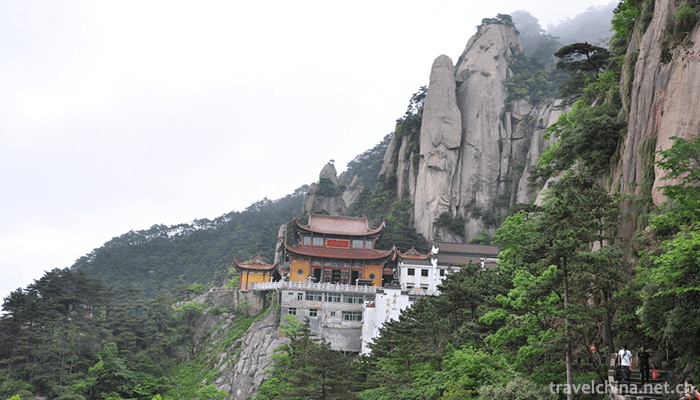
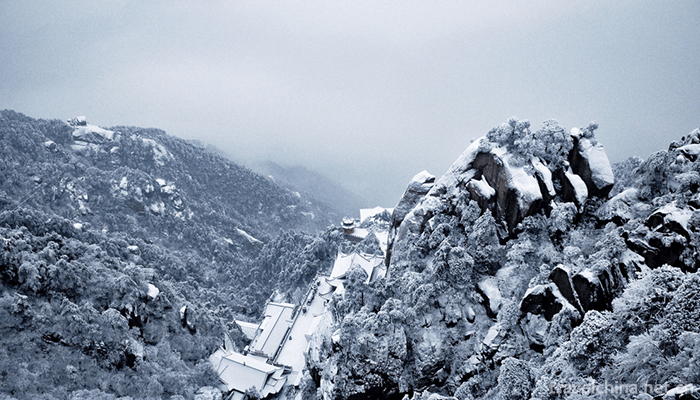
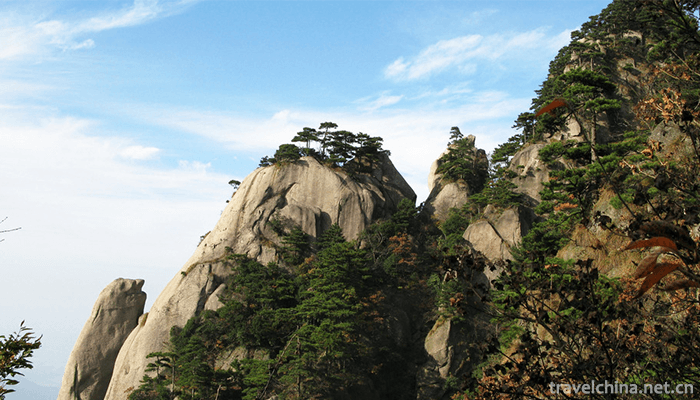
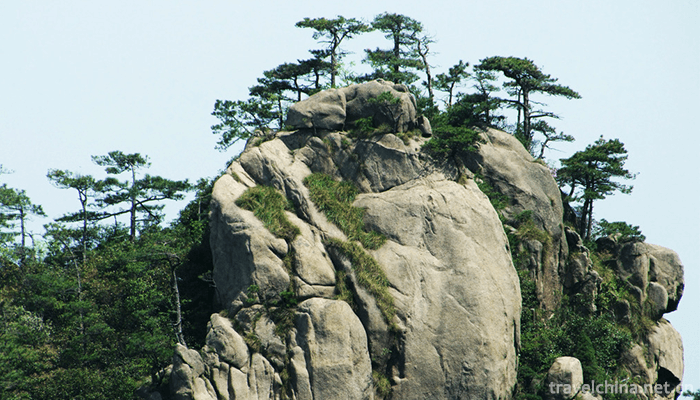
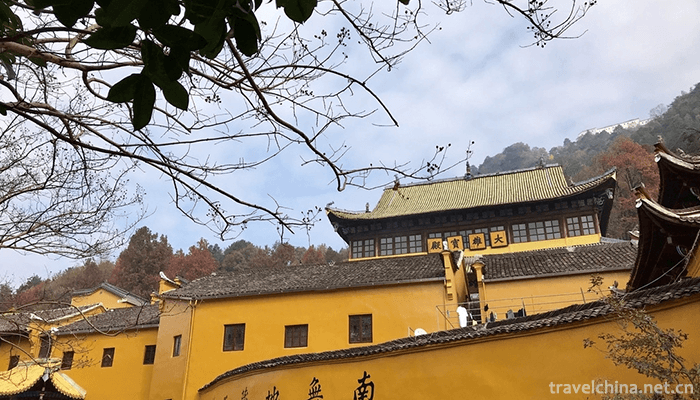


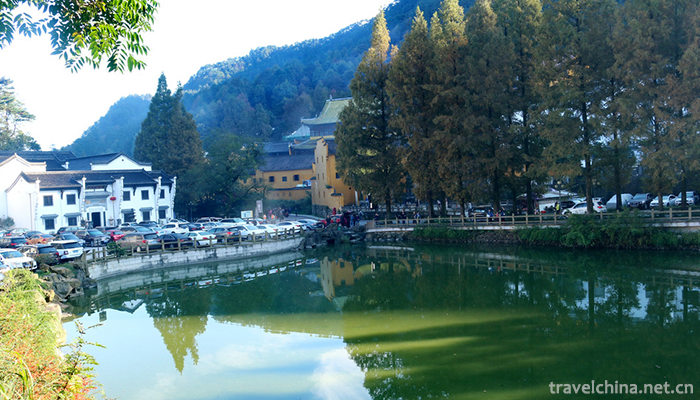
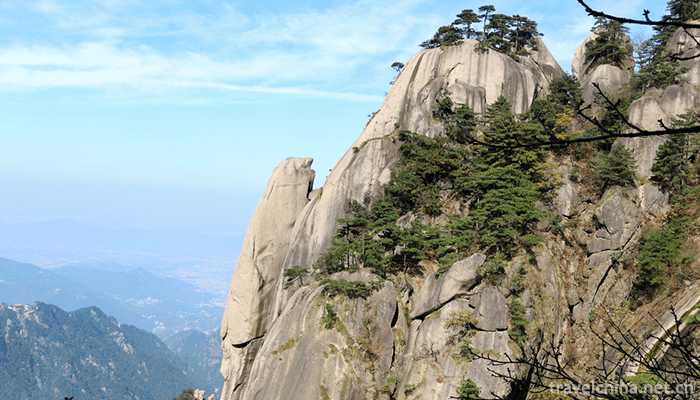
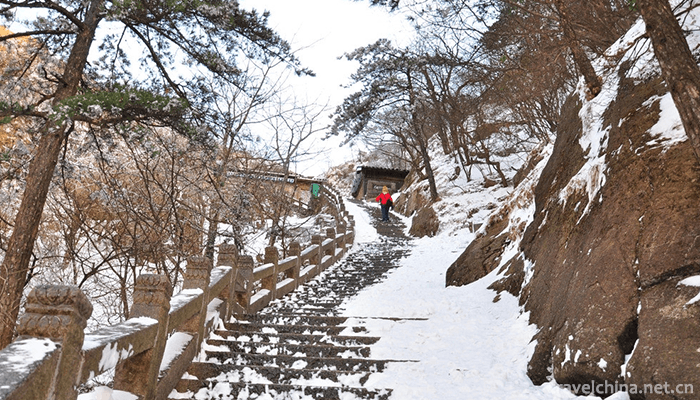
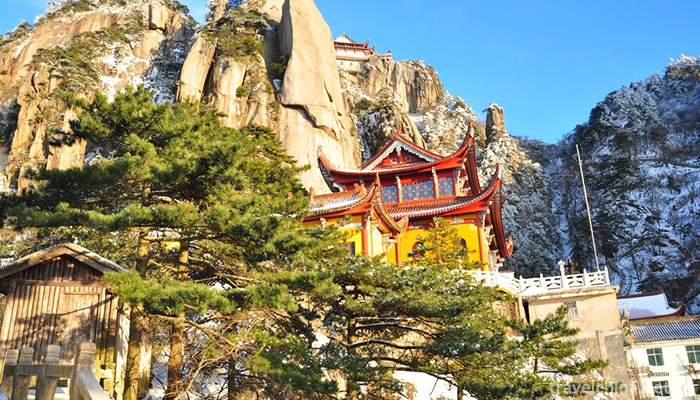
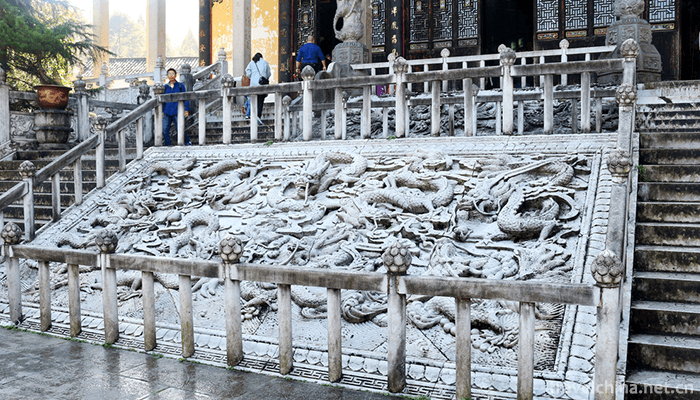
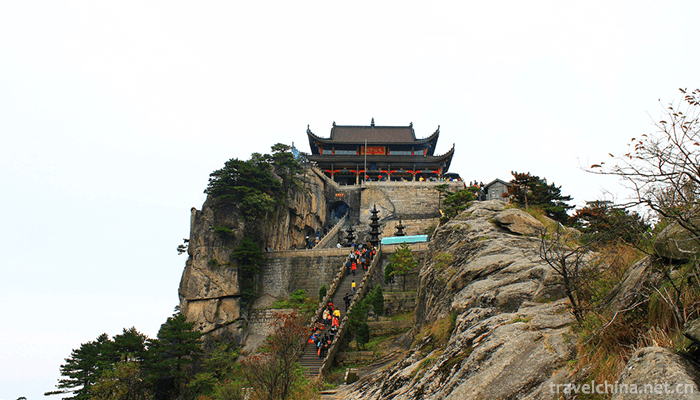
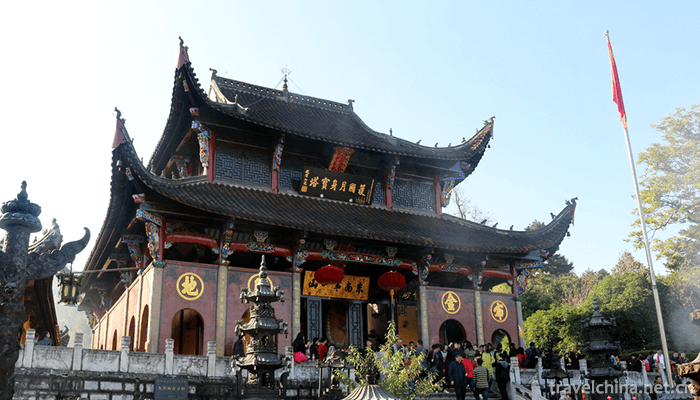
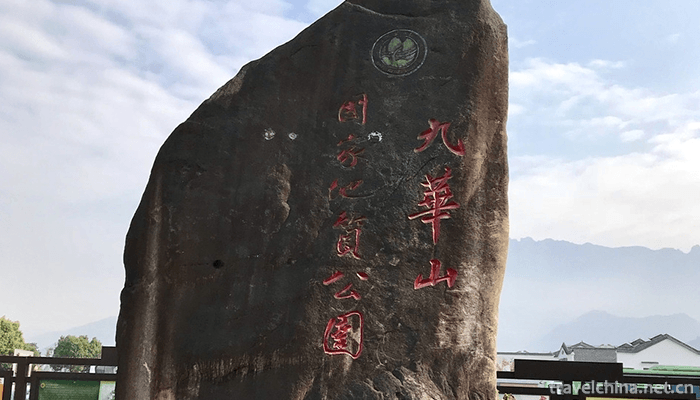
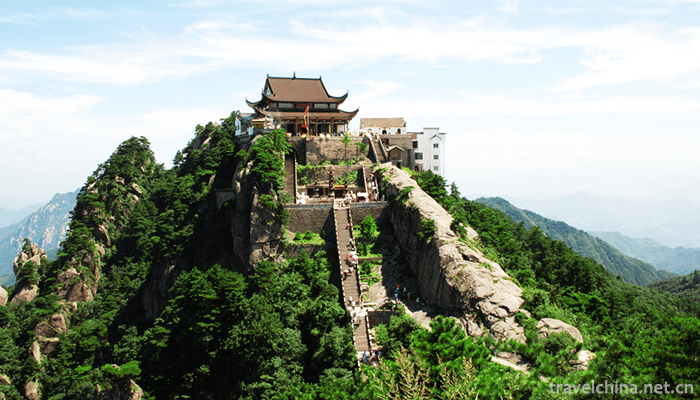
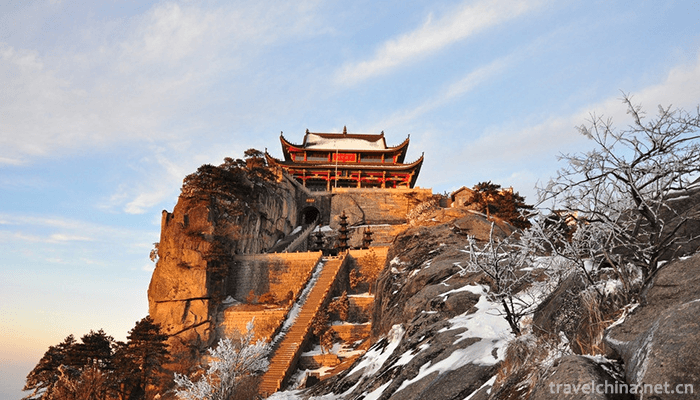

-
1.Shanghai Baoshan International Folk Art Exhibition Hall
Shanghai Baoshan International Folk Art Exhibition Hall is the first exhibition, research and protection of intangible cultural heritage in Shanghai constructed by Shanghai University in cooperation w
Time 2018-12-19 -
2.Thousand Buddhas Mountain
Qianfo Mountain is one of the three major scenic spots in Jinan. It was called Lishan in ancient times. Because it was called Shun's farming in Lishan in ancient times, it was also named Shun Mountain
Time 2018-12-26 -
3.Yanmenguan Scenic Area
Yanmenguan Scenic Spot is located in the northern part of Daizhou ancient city. South-controlled Central Plains and North-controlled Moyuan are grand military defense projects of ancient Chinese passe
Time 2019-03-01 -
4.Pearl Lane
Zhuji Lane, located in Zhuji Village, Zhuji Town, Nanxiong City, Guangdong Province, covers an area of about 3 square kilometers. Zhuji Ancient Lane is one of the national 4A scenic spots and one of t
Time 2019-03-20 -
5.Dujiangyan Drainage Festival
The Qingming Drainage Festival is a traditional festival in Dujiangyan, Sichuan Province. Every year during the Qingming Dynasty, Dujiangyan City welcomes the annual Qingming Drainage
Time 2019-04-28 -
6.Manchu speaking Department
Manchu Folk Talk Department refers to a long prose narrative literature created and preached by Manchu folk artists, which aims to reflect the war life and emotional world of the Manchu people in hist
Time 2019-05-19 -
7.Baisha Xile of Naxi Nationality
Naxi Baisha Xile is also known as "Xiaoli at breaking time", "Xiaoli at breaking time", "Xili at breaking time", "Xili at breaking time" and "Xie Li at bre
Time 2019-06-06 -
8.Xinjiang Opera
Xinjiang Opera, commonly known as "Xinjiang Xiaoqu", is a kind of local opera with unique style, which has been gradually formed and perfected after Shaanxi Opera, Qinghai Pingxian Opera, La
Time 2019-07-06 -
9.Smelting and Casting Techniques of Pig Iron in Yangcheng
Yangcheng pig iron casting technology was invented in the 6th century BC. Yangcheng pig iron smelting and casting technology in the smelting and casting process first crushed the ore, then roasted at
Time 2019-07-10 -
10.Celadon Firing Techniques of Yue Kiln
The firing history of celadon in Yue kiln has gone through the firing process of primitive, primitive and mature ceramics kilns and mature ceramics kilns (i.e. ceramics kilns). In the firing process,
Time 2019-07-16 -
11.Cai Lun
Cai Lun(?-121 years ) Zhong Zhong, a member of Guiyang County in Eastern Han Dynasty. Emperor Ming of Han Yongping entered the palace in the end, Zhang and two years (AD 88). Cai Lun was promoted to t
Time 2019-09-06 -
12.Chen Duxiu May Fourth leader
Chen Duxiu (October 9, 1879 -1942 May 27th), formerly known as "Qing Tong", the official name is "Sheng Sheng", "Zhong Fu", "Shi Shi". Anhui Huaining (now Anqin
Time 2019-09-07